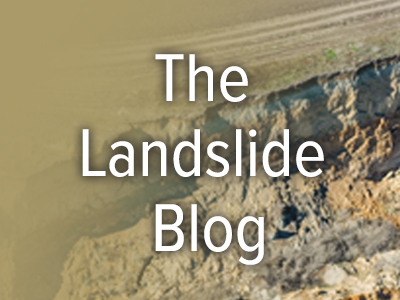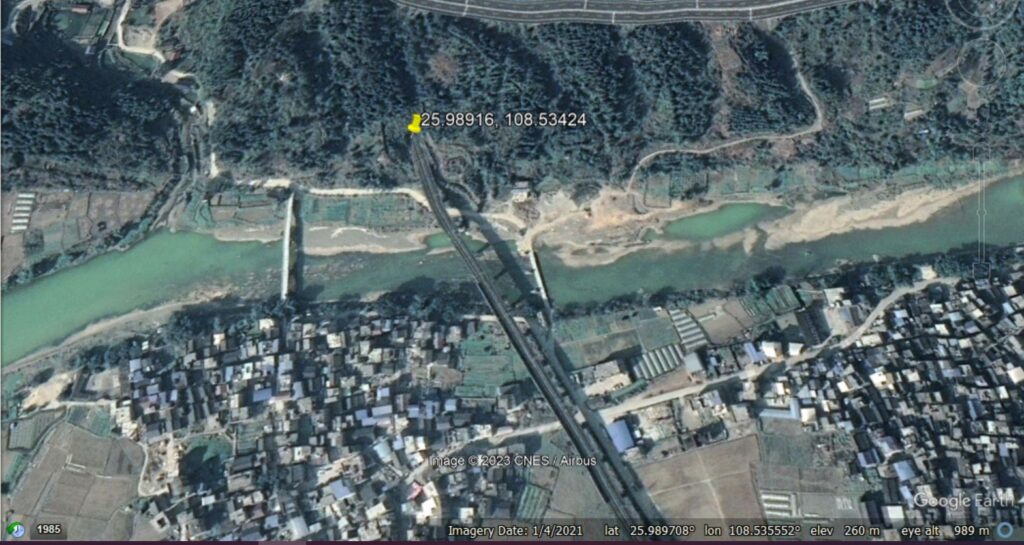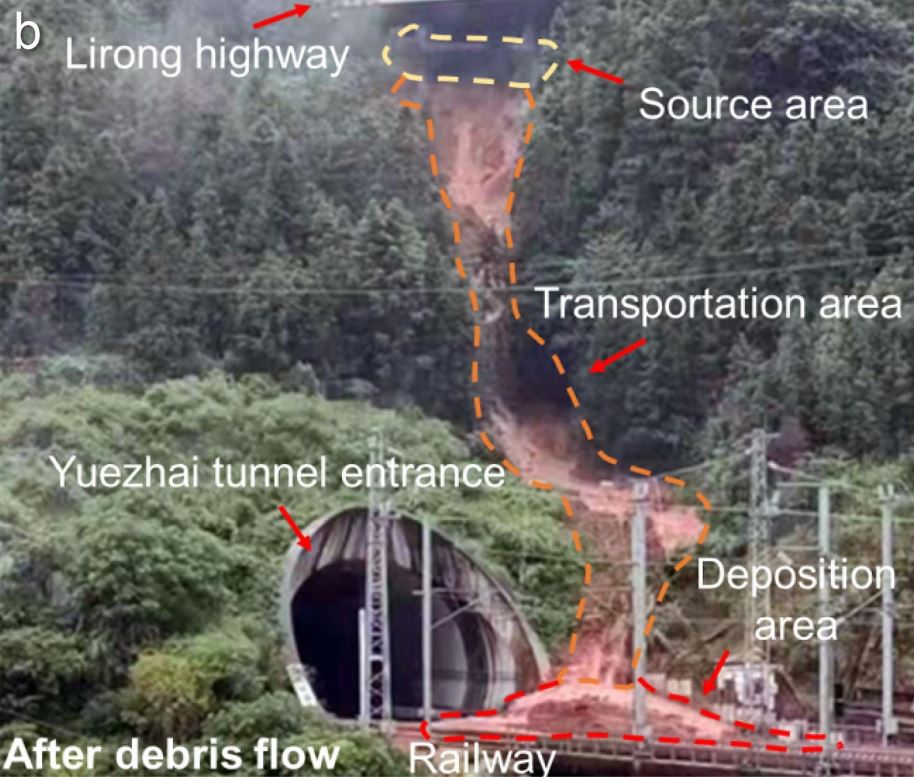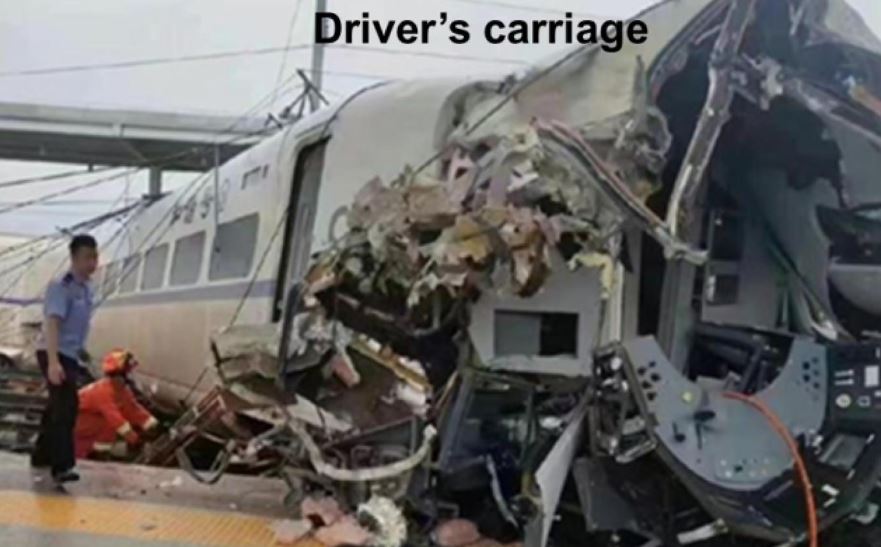The Landslide Blog is written by Dave Petley, who is widely recognized as a world leader in the study and management of landslides.

On 4 June 2022, a high speed train traveling at about 250 km per hour (155 miles per hour) struck a 200 cubic metre landslide that had inundated the track close to the portal of the Yuezhai tunnel, near to Rongjiang Station in Guizhou Province, China. the location of the accident was [25.98916, 108.53424]. Two of the carriages of the train were catastrophically derailed, with the locomotive carriage striking the platform of Rongjiang Station, 1 km further along the track, killing the driver and injuring 12 people.
Although the accident was terrible, the consequences could have been far worse. The driver was able to slow the train considerably before impact with the platform. After the initial collision with the landslide, the train crossed a bridge spanning a river, but did not leave the track area. Clearly, if it had fallen into the river the consequences would have been dreadful.
The accident at Rongjiang, and the landslide that caused it , are described in a paper published in the journal Transportation Geotechnics (Zhang et al. 2023). The landslide was triggered by short duration, intense rainfall. The cause of the landslide is quite interesting. The setting is illustrated by a pair of Google Earth images of the site. The is the location in July 2015, with the tunnel portal indicated:-

This is the same site in January 2021:-

And this is a more detailed view from 2021:-

The difference is of course the construction of a major highway across the slope above the tunnel portal. Note that the highway is heavily distorted in Google Earth because the digital terrain model has not been updated to account for the cuttings along the road alignment – the algorithm overlays the road onto the original topography. But note also the cut slope close to the gully that leads to the tunnel portal.
Zhang et al. (2023) attribute the landslide to this road. They describe an area of uncompacted fill, with a volume of about 500 cubic metres, on the road alignment. The road was constructed between 2017 and 2019 – the paper indicates that the materials from the cutting were the source of this fill.
During the period of intense rainfall on the day of the accident, Zhang et al. (2023) propose that the fill became saturated and failed, to generate a mobile debris flow that inundated the track. The image below, from the paper, shows the aftermath of the landslide:-

The accident illustrates a number of things. First, high speed trains are remarkably resilient to these type of collisions. It is remarkable that the train was able to travel for a full kilometre after derailing, across a ravine, but for there to have been just one fatality. Second, railways are vulnerable to landslides, even when designed to modern standards. But third, and perhaps most importantly, accidents can occur due to landslides that sit outside of the boundary of the railway line. In this case, the landslide was associated with a road constructed after the railway was built. Ensuring that the track is safe in these circumstances is a challenge.
The vulnerability of fill slopes to failure is well established and documented. Ensuring that uncompacted fill slopes are not emplaced on slopes above railway lines is a key lesson from the accident at Rongjiang.
Reference
Zhang, S., Dai, C., Wang, S. et al. 2023. A catastrophic high-speed train crash caused by a small-scale debris flow in China. Transportation Geotechnics,
42, 101070. doi: https://doi.org/10.1016/j.trgeo.2023.101070

